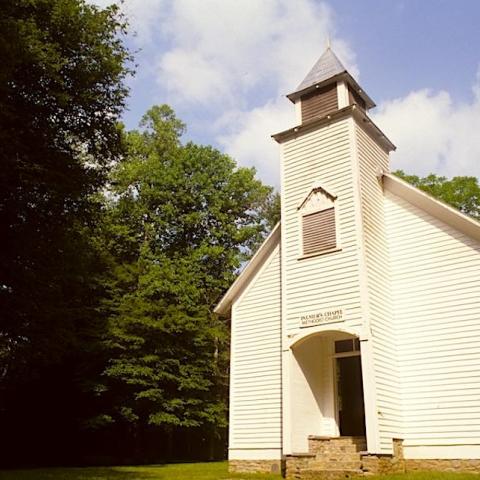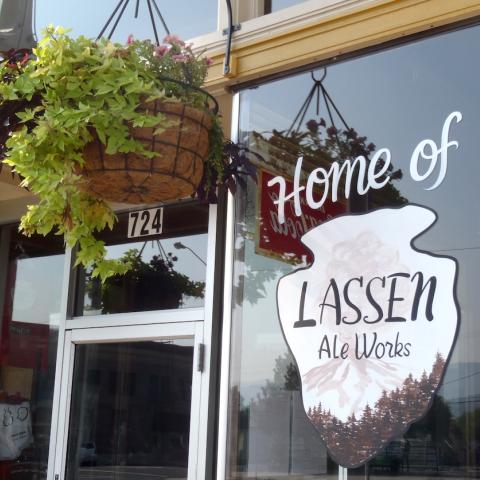
If there are any billion-dollar babies in the National Park System, they would be the Blue Ridge Parkway and Great Smoky Mountains National Park, both of which contributed more than $1 billion in tourism benefits to the communities surrounding their borders, according to a 2015 analysis of the National Park System's value to the national economy.
At the other end of the financial spectrum, the 2015 National Park Visitor Spending Effects: Economic Contributions To Local Communities, States, And The Nation report released last week noted that neither Noatak National Preserve nor Kobuk Valley National Park, both in Alaska, had any visitation last year and so no economic contribution. (Traveler footnote: That's not exactly accurate, though, as Linda Jeschke, chief of interpretation for the Park Service's Western Arctic National Parklands, explained in response to our inquiry: "Our staff here in Kotzebue, Alaska, manage three national park units together: Cape Krusenstern National Monument, Kobuk Valley National Park, and Noatak National Preserve," she wrote in an email. "All three units are virtual wilderness areas with no roads, facilities, backcountry permits or entrance gates. In 2014 our superintendent decided to stop reporting visitor numbers because we just had no accurate way of assessing our visitation. We've had conversations with social science researchers at the University of Alaska Fairbanks about devising a study that would count a limited number of actual visitors in the parks and then extrapolate those numbers for a decent estimate of total visitation. It would be similar to the way our biologists count wildlife like muskoxen or bears. We hope to get that study going, but it hasn't happened yet.")
FREE Returns on all UA.com orders.![]()
Overall, though, the National Park System was responsible for a bit more than $32 billion in economic activity in 2015, the report noted.
Specific to the Blue Ridge Parkway, it saw $952.1 million in total visitor spending, and $1.3 billion in total economic output when jobs, labor income, and value added contributions were factored in. For Great Smoky Mountains, those numbers were $873.9 million, and $1.2 billion.
"The big story, of course, is that we had record visitation in 2015 of 307.2 million park visitors," National Park Service Director Jon Jarvis said Friday while discussing the report. "The way we like to look at this from an economic standpoint, is particularly in the visitor spending around gateway communities, which is defined as 60 miles around, sort of a big circle, around each one of our national park units. So those 307 million visitors spent $16.9 billion in those gateway communities. That's obviously their lodging and food and services, in support of their travel. And that has an amazing ripple through the U.S. economy. It supported 295,000 jobs and an overall $32 billion benefit to the U.S. economy."
In 2014, visitation to the park system was reponsible for $15.7 billion in direct visitor spending, and an estimated $29.7 billion boost to the national economy.

The report points out why the Park Service and others often refer to the park system as an economic engine, as last year it was responsible for 295,339 jobs overall, and 252,030 local jobs tied to those gateway communities. Not surprisingly, the largest single dollar component was the lodging industry, which contributed $5.2 billion to the overall total. Trailing that were restaurants and bars, which combined contributed $3.4 billion, the report noted.
"The way I like to think about it is the Park Service is an investment for the American economy," Director Jarvis said."Every dollar that the taxpayers put into the National Park Service returns $10 to the U.S. economy."
Official REI Coupons and Rebates page![]()
The director, noting again the record visitation to the park system for 2015, said that the Park Service's centennial celebration this year could result in another record year of visitation.
The 2015 data showed increases in overnight stays, campground stays, backcountry, and RVs.
"Overnight stays all up, in most cases, in double digits," said Director Jarvis. "Campgrounds were up 12.5 percent, RV overnights up 10 percent, backcountry overnights up 7 percent as well."
Against the increase in visitation, some park superintendents have expressed concerns over managing the crowds and protecting the resources from those crowds.
Director Jarvis said he was aware of those concerns but was optimistic that parks this summer would have the personnel they need to welcome visitors.
"We did get a really good FY16 budget that does restore all of the seasonal workforce to what it was in 2009," he said. "So '16 should be a strong year for rangers on the ground, and our volunteer workforce.
“Some parks are feeling the crunch of record levels of visitation," he agreed, adding, however, that "there’s an upside of that, too. It builds public support for the parks, introduces the parks to a new generation. And it translates into the kind of support we need for the next century.”
With the next fiscal year not too far down the road, Director Jarvis noted that the U.S. Senate had attached the National Park Service Centennial Act to the massive energy bill it passed last week. Calling it a compromise version of the legislation that had been introduced to the chamber, the director said the amended version "has half to three-quarters of the major legislation that we sent to the Hill."
"No poison pills," Director Jarvis said, though he did note that the legislation would have to be reconciled with similar legislation in the House.
"We are pretty optimistic that we will get some good out of it," he said.





 Support Essential Coverage of Essential Places
Support Essential Coverage of Essential Places







Comments
It's interesting to note the state by state, and park by park breakdowns are available on an interactive tool accompanying the new national report. We made use of that for our blog post the other day on Acadia National Park's impact on the Maine economy. Wonder if that might be the kind of economic benefit that supporters of the proposed national monument outside of Katahdin will bring up to make their case, even though local residents in Patten last week voted down the idea. Here's the link to our post: http://acadiaonmymind.com/2016/04/acadia-boosts-economy-with-248m-in-201...
Taht amount of money is why some politicians wan to privatize the parks.
I'm not impressed by this economic activity propaganda. It mostly measures how badly NPS management has lost its way. The main factor in the calculation is visitation, which is an estimate at best and no doubt well-padded in some cases, such as Olympic National Park. It also seems to ignore the fact that much of this economic activity would occur even if there were no national parks at those locations.
"Economic ‘wealth’, although more conventionally represented by money, is actually dependent on natural resources. The goods and services exchanged for money are inextricably linked to the natural resources from which they are derived, which in the large part stem from good old fossil fuels.
So, at the crux of it all, the present economic system, stable only with growth, is dependent on an infinite supply of natural resources! Have we completely lost touch with reality?!"
http://www.thisisyoke.com/is-economic-growth-sustainable/